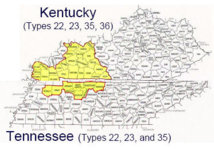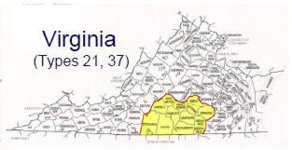waikikigun
Well-Known Member
- Joined
- Mar 24, 2015
- Messages
- 1,452
- Points
- 113
Trying to get a more rational grasp of what fronto leaf is.
An hour or two of Googling tells me that it's air cured wrapper leaf, darker, richer, smoother, thicker, and chocolatier than "normal" wrapper leaf because of the "special way it's cured and processed."
There is nothing to suggest that it comes from any specific kind of leaf variety.
Its use is as a blunt wrapper (weed wrapped in tobacco), or, chopped up, after which it becomes "grabba," used in a spliff (a cigarette with weed and tobacco mixed).
WLT offers a few kinds:

 wholeleaftobacco.com
wholeleaftobacco.com
The Bay Front offers "superior rolling and burning qualities."
The Black Fronto is "cured in a manner by which the harshness is removed from the leaf," and it has "a smokehouse aroma." Was it fire-cured? Or more likely subjected to smoking after the initial normal air cure?
The LaRose is "also known as Grabba," and has "superior rolling and burning qualities."
(Even though grabba is usually cut up fronto used for filler, fronto used as wrapper can also be referred to as grabba in some places).
So, what I'm trying to grasp is how much of the front concept (as different from regular cigar wrapper) is purely marketing, in terms of these special processes and superior qualities and so forth. And also, are there typical kinds of leaf used for this stuff, more American type than Caribbean, for example? And is this stuff really smoother, chocolatier, etc from some special version of air curing and/or other processing?
Or is it just any leaf sold as blunt wrap instead of cigar wrap?
And if anyone has tried the WLT offerings, what's their opinion on what kind of leaf variety it seem to be, and does it seem to somehow have been processed differently from normal cigar wrapper leaf?
Thanks for your thoughts!
An hour or two of Googling tells me that it's air cured wrapper leaf, darker, richer, smoother, thicker, and chocolatier than "normal" wrapper leaf because of the "special way it's cured and processed."
There is nothing to suggest that it comes from any specific kind of leaf variety.
Its use is as a blunt wrapper (weed wrapped in tobacco), or, chopped up, after which it becomes "grabba," used in a spliff (a cigarette with weed and tobacco mixed).
WLT offers a few kinds:

Black and LaRose Fronto
Fronto (also known as Fanta, Funta and various other names) has been around for years. These whole leaf wrapper grade tobacco leaves are popular in the U.S.A., Jamaica and other Caribbean islands.
 wholeleaftobacco.com
wholeleaftobacco.com
The Bay Front offers "superior rolling and burning qualities."
The Black Fronto is "cured in a manner by which the harshness is removed from the leaf," and it has "a smokehouse aroma." Was it fire-cured? Or more likely subjected to smoking after the initial normal air cure?
The LaRose is "also known as Grabba," and has "superior rolling and burning qualities."
(Even though grabba is usually cut up fronto used for filler, fronto used as wrapper can also be referred to as grabba in some places).
So, what I'm trying to grasp is how much of the front concept (as different from regular cigar wrapper) is purely marketing, in terms of these special processes and superior qualities and so forth. And also, are there typical kinds of leaf used for this stuff, more American type than Caribbean, for example? And is this stuff really smoother, chocolatier, etc from some special version of air curing and/or other processing?
Or is it just any leaf sold as blunt wrap instead of cigar wrap?
And if anyone has tried the WLT offerings, what's their opinion on what kind of leaf variety it seem to be, and does it seem to somehow have been processed differently from normal cigar wrapper leaf?
Thanks for your thoughts!




